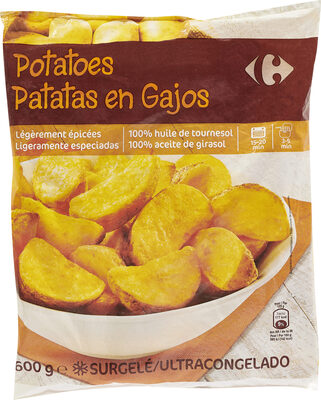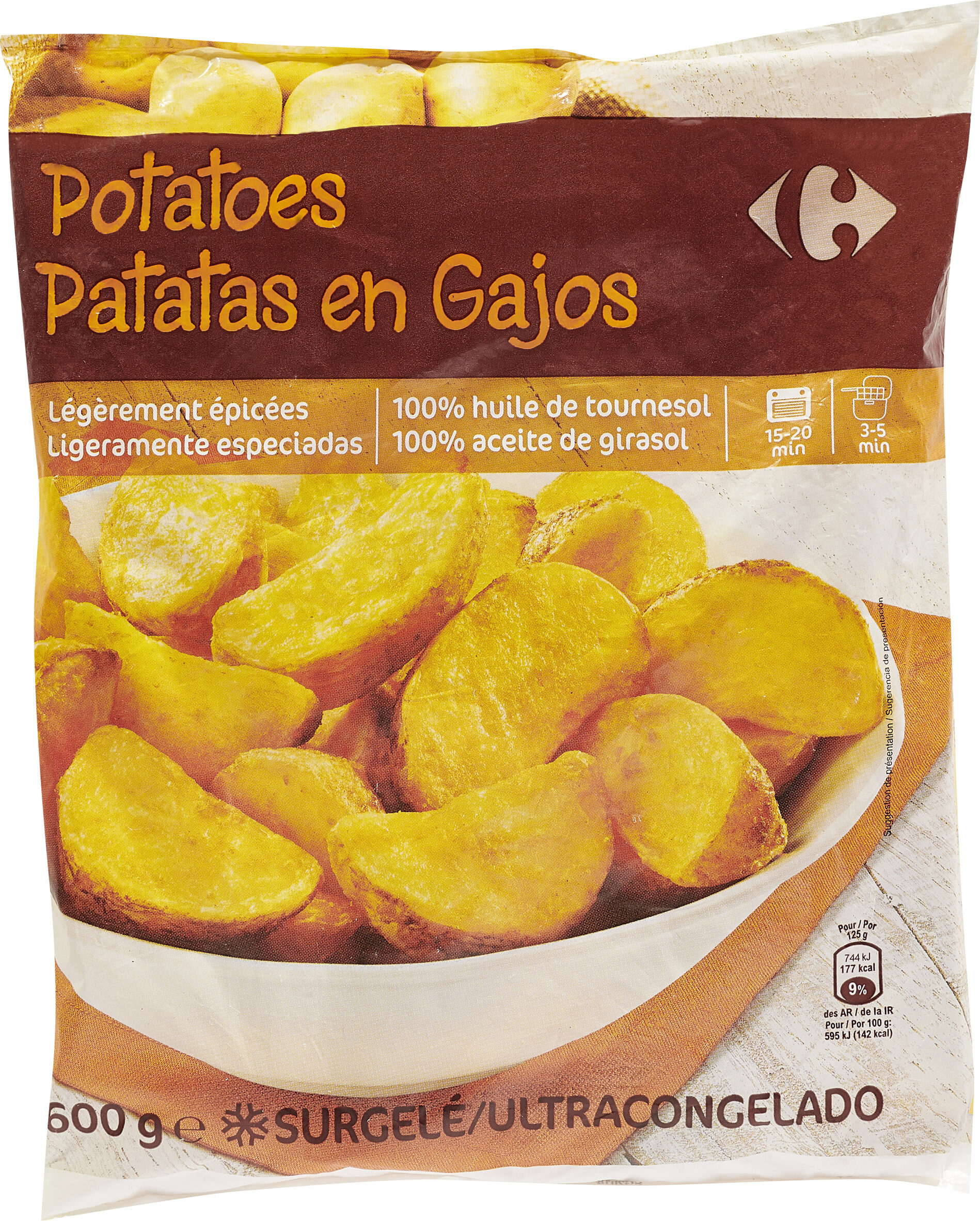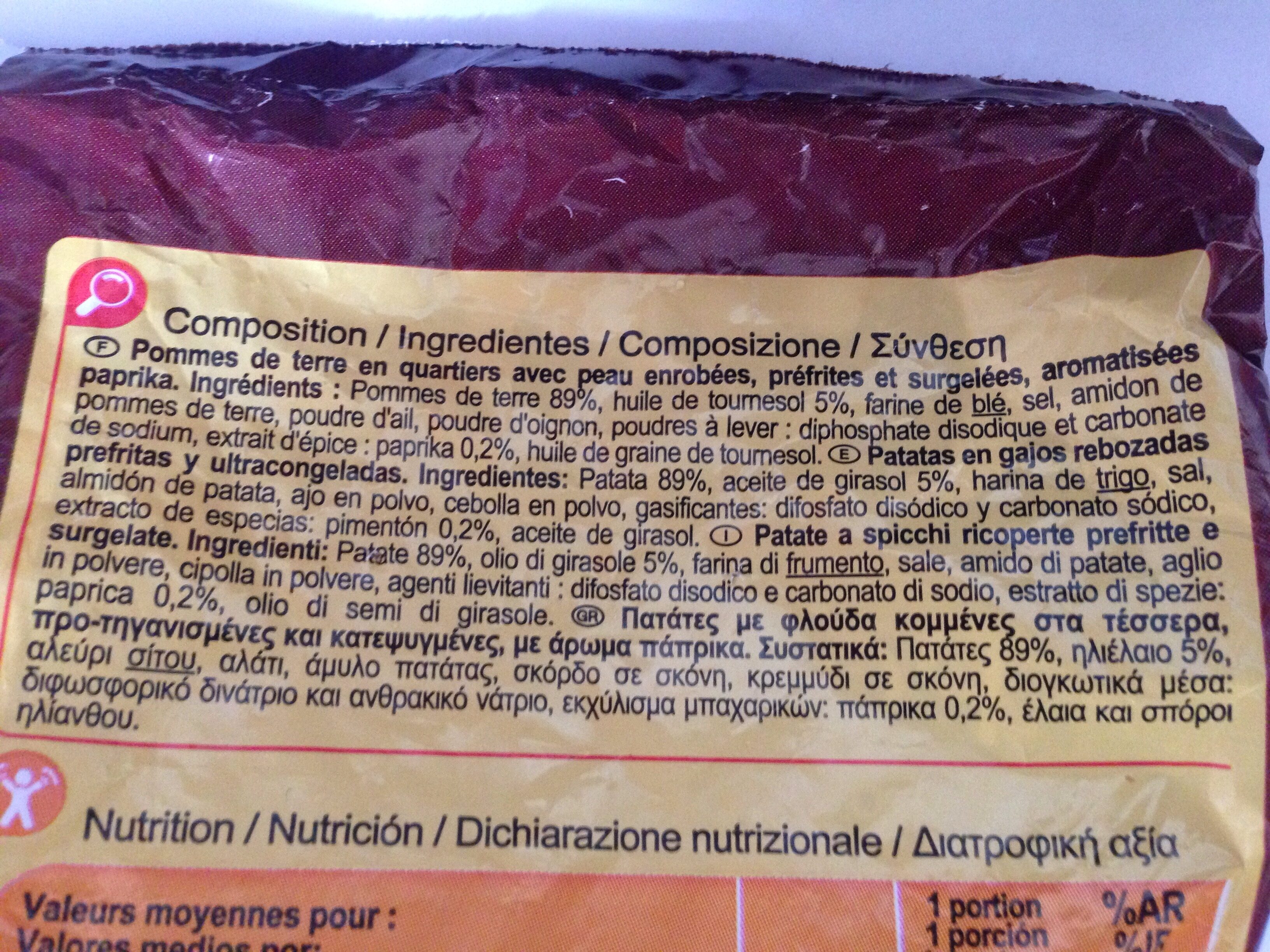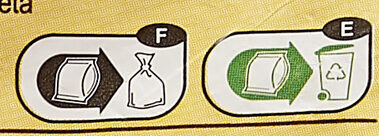Potatoes - Carrefour - 600 g
Aquesta pàgina del producte no està completa. Podeu ajudar a completar-la editant-la i afegint-hi més dades a partir de les fotos ja disponibles, o fent-ne més amb l'aplicació de androide o iPhone / iPad. Gràcies!
×
Algunes de les dades d’aquest producte les ha proporcionat directament el fabricant Carrefour.
Codi de barres: 3560070699377 (EAN / EAN-13)
Nom comú: Pommes de terre en quartiers avec peau enrobées, préfrites, aromatisées paprika - Surgelé.
Quantitat: 600 g
Marques: Carrefour
Categories: Aliments i begudes amb base vegetal, Aliments amb base vegetal, Cereals i patates, Patates fregides i similars, Aliments congelats, Aliments vegetals congelats, en:Frozen fried potatoes, en:Frozen potatoes, en:Fries, en:Frozen cooked spiced potato chips, en:Frozen fries, fr:Alimentos de origen vegetal, fr:Alimentos de origen vegetal congelados, fr:Alimentos y bebidas de origen vegetal, fr:Aperitivos, fr:Botanas, fr:Cereales y patatas, fr:Chips fritos, fr:Congelados, fr:Patatas, fr:Patatas congeladas, fr:Patatas fritas, fr:Patatas fritas congeladas, fr:Snacks salados
Etiquetes, certificacions, premis:
Punt verd, Fet a Bèlgica, Amb oli de gira-sol
Origen del producte i / o dels seus ingredients: Ces Potatoes sont fabriquées en Belgique à partir de pommes de terre cultivées en Union Européenne et d'huile de tournesol issue de diverses origines.
Productor: Fabriqué en Belgique par VVP-EMB : B-02613 pour Interdis.
Llocs de fabricació o processament: Belgique
Codi de traçabilitat: EMB B-02613
Botigues: Carrefour, carrefour.fr
Països on es va vendre: Espanya
Matching with your preferences
Altres dades
Altres dades: 600g e / Etoile surgelé + Surgelé en toutes lettres / GDA énergie Nos pommes de terre sont issues des meilleures variétés, notamment la Bintje. Elles sont soigneusement sélectionnées pour la fabrication de nos Potatoes. Nos pommes de terre sont coupées, enrobées et préfrites dans l'huile de tournesol. Pour de fondants et croustillants quartiers de pommes de terre, enrobés d'une préparation légèrement épicée. Carrefour élabore ses Potatoes avec 100% d'huile de tournesol. En garantissant un faible taux d'acides gras saturés, l'huile de tournesol améliore la qualité nutritionnelle des produits. Légèrement épicées / 100% huile de tournesol / Picto Four (15 - 20 min) / Picto Friteuse (3 - 5 min)
Preparació: Au four : Préchauffez le four à 220°C (th.7). Étalez les potatoes encore surgelées en une seule couche sur la plaque du four. Glissez la plaque à mi-hauteur du four et laissez cuire 15 à 20 minutes environ. Retournez les potatoes à mi-cuisson. Servez bien chaud. Il est inutile de les resaler. À la friteuse : Plongez les potatoes encore surgelées par petites quantités dans de l'huile chauffée à 175°C et laissez dorer pendant 3 à 5 minutes. Pour limiter le surplus de matière grasse, laissez reposer les potatoes sur du papier absorbant. Pensez à renouveler le bain d'huile après 10 à 12 fritures.
Avís: ATTENTION, NE PAS RECONGELER APRÈS DÉCONGÉLATION.
Condicions de conservació: À consommer de préférence avant le : voir au dos du sachet. À conserver 24 heures au réfrigérateur, 3 jours dans le compartiment à glace du réfrigérateur, plusieurs mois dans un congélateur*** à -18°C.
Servei al client: Interdis - TSA 91431 - 91343 MASSY Cedex - France
Report a problem
Fonts de dades
Producte afegit per kiliweb
Última modificació de la pàgina del producte per roboto-app.
La pàgina del producte, també editada per autorotate-bot, benelyas, carrefour, driveoff, ecoscore-impact-estimator, jeremy64, naruyoko, openfoodfacts-contributors, org-carrefour, quechoisir, quentinbrd, thaialagata.












